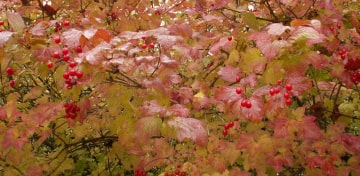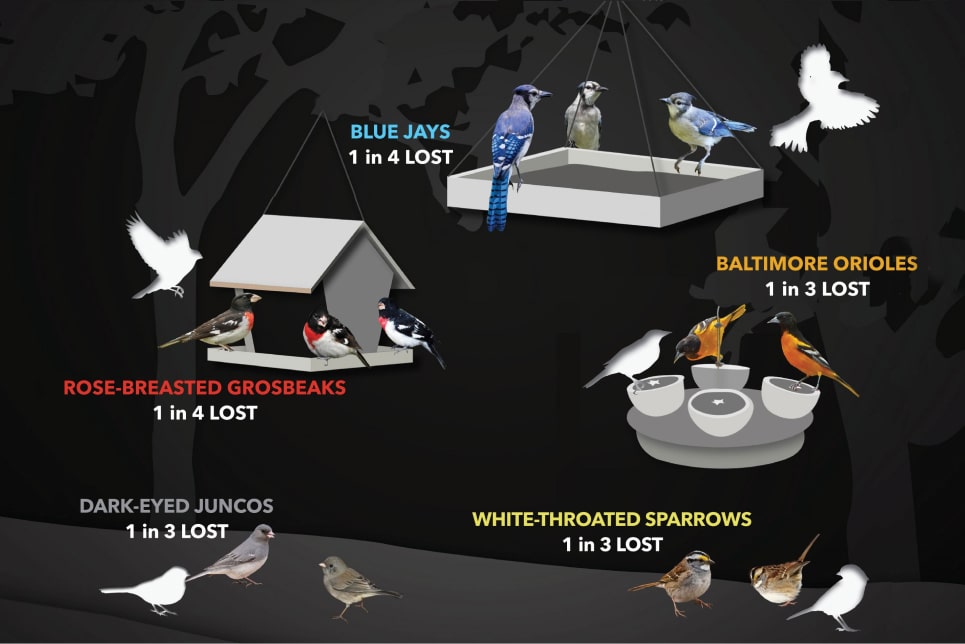

FAQs
Not sure whether to sign up, or what happens once you do?
If your answers are not here, bug us info@234birds.org

Q: What happens when I sign THE LIST?
A: You will get a confirmation email. You will not get solicited for donations or petitions. You will feel good about having made a commitment to doing something with real, visible, measurable, pleasurable positive effects. If you do want to hear from us (sporadically) sign up for the newsletter too.
Q: What if my garden is mostly exotics, can I still sign the list?
A: Yes! It is about your commitment to planting Two Thirds from this day on.
Q: Do I need to remove all my exotics?
A: Nope. Just remove invasives and start putting in natives wherever you can, there is always room for more plants. Especially if you reduce that exotic monoculture known as lawn.
Q: I don’t know which plants on my property are exotic, native or invasive.
A: It doesn’t altogether matter, if you just keep adding natives going forward and learn their names as you go. But, the more you know your plants the better: look in TOOLS for plant ID help, get to know your local gardeners, join a garden club.
Q: How do you calculate Two Thirds? Some plants are so much larger than others.
A: The original research was actually based on biomass or total organic material. IE one native Oak, is a whole lot more “productive” than a hundred grasses. But they all are very important to some life form and we want to keep it simple. Any two plants, any size, out of every three you plant… you are Two Thirding.
Q: How do I stop using pesticides? Will my garden suffer?
A: Actually, it should do better once the soil has a chance to recover its biome. If you have some plants that can’t live without pesticides, try living without them. There are so many resilient natives to choose from.
Q: Are pesticides ever acceptable?
A: We don’t think so (unless, perhaps, you are the curator of a highly valuable and super fussy hot house collection). Chances are you can always find a better solution if you stick with it. That’s what the commitment is all about. It just isn’t the same relationship if you cheat.
Q: Birds and bees seem to like non-native plants too. What’s so great about natives?
A: Many exotic plants might have abundant pollen or nectar but lack other attributes, like leaves, fruit and seeds that insects and birds need for ultimate health. Butterfly bush is an example. It is an exotic that attracts large numbers of butterflies, but it only offers nectar (junk food!) while the much more wonderful, native Milkweed provides food and shelter for every stage in the life cycle of a Monarch butterfly, and about 456 other insect species too.
Q: What about berries? Does it matter if they are native if birds love them?
A: Berries are not all the same. Native fruiting plants tend to have berries in higher nutritional value at the times that they are most needed. Some exotic plants, like Russian Olive, have become invasive as birds eat the sugary fruit and spread the seeds.
Q: Why plants? Can I just put out bird feeders instead?
A: There is no real evidence that bird feeders play a significant role in supporting bird populations, and it is generally thought that they are mostly to amuse humans. This is not bad, as it is a good way to learn about, and then care about birds. However, some experts believe that they can spread disease by bringing birds together to eat. In the spring, most birds need insects to feed their young (baby birds can’t eat seeds). Native plants are the feeders for insects.
Q: How do I know which native plants to buy?
A: Check out Getting Started for native plant lists appropriate to your area. Find native plantings in the wild or local gardens and take photos of what you like. Copy that.
Q: Are nativars (cultivars/selections of natives) ok?
A: Until there is more knowledge about which nativars have been bred to the point of uselessness, and you have a big choice in the nurseries, we take a broad view and say look for local genotypes and straight species but plant any natives you can get.
Q: How do I know what birds I have?
A: There are lots of apps and bird guides. But best is a friendly bird watcher. Ask your local Audubon about beginner courses, and go on a bird walk.
Q: How do I know if I am doing a good job and truly making a positive impact?
A: We all wish we had that “before” photo. Here’s your chance. Take pictures of everything in your yard, everything. Make a record of as much floral and faunal life as you can identify or photograph. Worry about naming it later. Over time, you can track the increases. You can add them to citizen science apps like iNaturalist and eBird to keep a record and contribute to global conservation knowledge.
Q: I love the idea and I love birds, but I don’t have a yard! How can I help?
A: Wherever you go, spread the word to people you know who have yards. Or your favorite park/public garden, village square.
Q: I love it! How do I spread the word?
A: Make it part of your commitment. Perhaps start a challenge among co-workers and friends to sign on and start counting and sharing the ways their yard, and lives, improve. Add your projects and places to our map. Contribute your Case Studies. Organize an event to solve problems and share solutions. Post your Two Thirds triumphs on Instagram (add some hashtags) For assistance and materials, visit our [Downloads] section. Take it and fly with it.